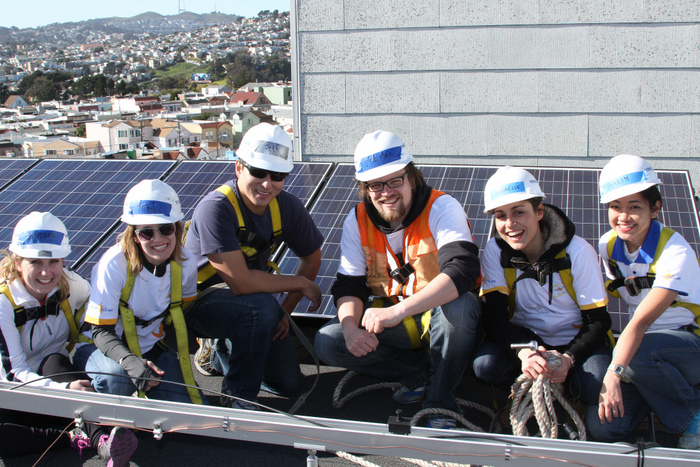
Solar power is a growing trend for homeowners, especially as prices continue to drop, but for many homeowners, the upfront cost of installing any residential solar power is still daunting. This is obviously even more true for those lower on the socioeconomic ladder. At that point, solar is a luxury that’s not even in consideration, even if the energy savings, after installation, would end up helping them the most.
But California-based nonprofit GRID Alternatives has found a creative solution, using the state’s cap-and-trade public policy, to deliver solar power to low-income housing.
From the San Francisco Chronicle:
… the effort will install home solar arrays in disadvantaged neighborhoods, using $14.7 million raised through California’s cap-and-trade system for reining in greenhouse gas emissions. That system forces factories, power plants, oil refineries and other large businesses to buy credits for every ton of carbon dioxide and other heat-trapping gases they pump into the atmosphere.
Using proceeds from the state’s Greenhouse Gas Reduction Fund (GGRF) under the California Department of Community Services and Development (CSD), GRID Alternatives will provide rooftop solar to more than 1,600 families through 2016.
GRID Alternatives has been providing solar power and solar job training for low-income communities in California since 2004, and as manager of the state’s Single-Family Affordable Solar Homes program (SASH) has developed a unique model—now being replicated nationwide—that integrates workforce development into all of its projects.
Last week, a team of job trainees from the Sacramento Regional Conservation Corps, providing students with hands-on experience that will help them access the growing solar job market, completed 2.5-kW solar electric system install for Roy Rivera, a disabled man who lives on a fixed income. The project will provide an estimated $818 electricity cost savings in the first year and $22,800 over its 30-year lifetime.
“We hope the savings will help defray some of my medical costs,” Rivera said. “When you have a budget like ours, which is stretched just about as far as you can go, it makes a big difference.”
The funds for these projects were awarded to GRID Alternatives by CSD under the Low Income Weatherization Program (LIWP), which was funded $75 million in GGRF proceeds in the state’s 2014-15 budget.
“This home is one of many low-income households statewide that are expected to receive rooftop solar systems through the state’s climate investments,” said Linné Stout, Director of CSD. “These investments will reduce emissions, save energy and put money back in the pockets of low-income Californians.”
In California, the cap-and-trade regulation is controversial because it is both a tax on business, and also seems to enable corporations. But GRID Alternatives shows how the rules could really have wide-ranging benefits for both emissions-reduction and the local community empowerment.
— Solar Builder magazine
[source: http://solarbuildermag.com/news/grid-alternatives-low-income-solar-california/]

Leave a Reply
You must be logged in to post a comment.